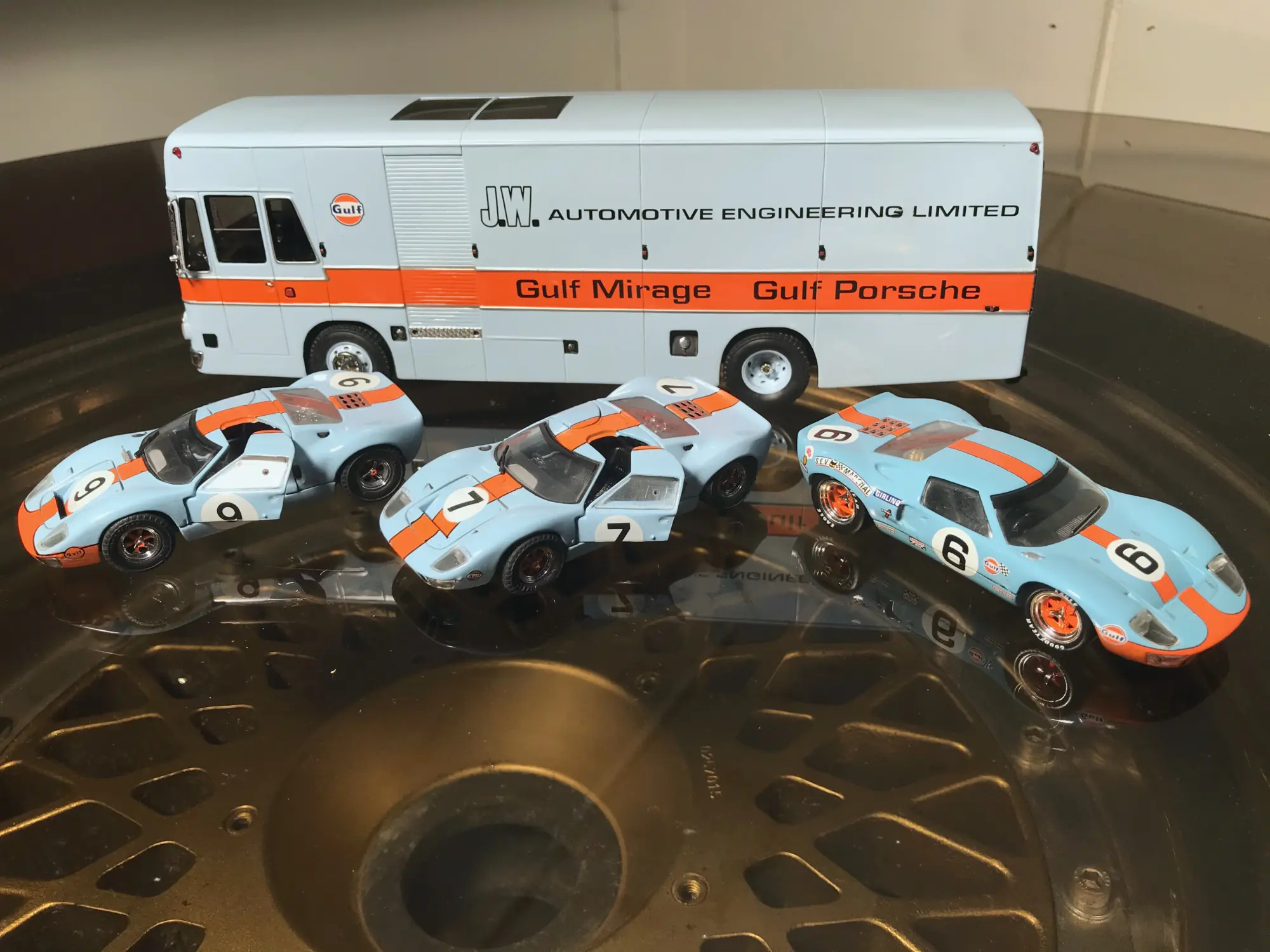Published April 2, 2024 | Last update January 31, 2025 | 12 models online
Henry Ford wanted to buy Ferrari and then found out that Enzo Ferrari just used Ford to get a better price from FIAT. Ford decided to beat Ferrari at his own terrain and that was Le Mans. That sounds like the beginning of a movie – which they eventually made and is quite good also – but it is the history of the first Ford GT40, MkII and MkIV. I will come back to in another overview, this one is about the JWA racing team that raced the GT40’s and Mirage M1 in Gulf livery after Ford quit because the regulations changed and the big V8’s that Ford was using, were banned.
1967 Daytona 24h, Ford GT40 Ford won Le Mans in 1966 convincingly with their big-engined MkII’s, Ferrari took revenge by scoring a triple win at Daytona in ’67. Best of the sports cars and Fords was this John Wyer Automotive Engineering 4.7 liter GT40. It was the car of one of the Gulf directors that marked the start of the cooperation between Gulf and John Wyer Racing.
#11 Dick Thompson / Jacky Ickx – 6th overall / 1st sports car
Ford GT 40 – 4.7 liter Ford 289 Weslake V8 90º , approx. 400 hp. Firestone tires. Weight 910 kg. Steel semi-monocoque, chassisnr. #1049

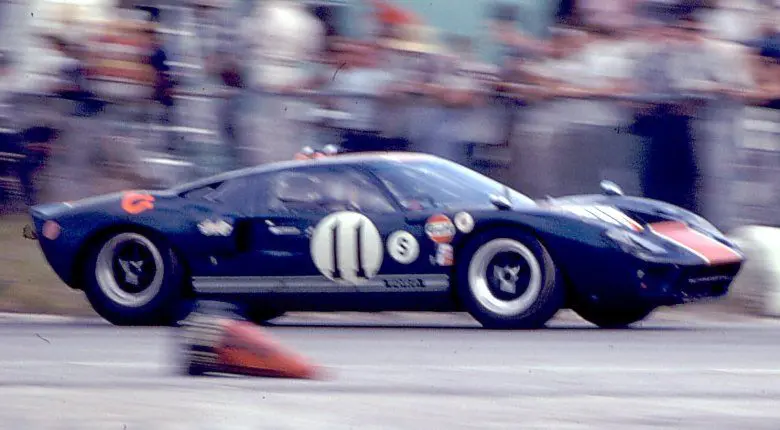

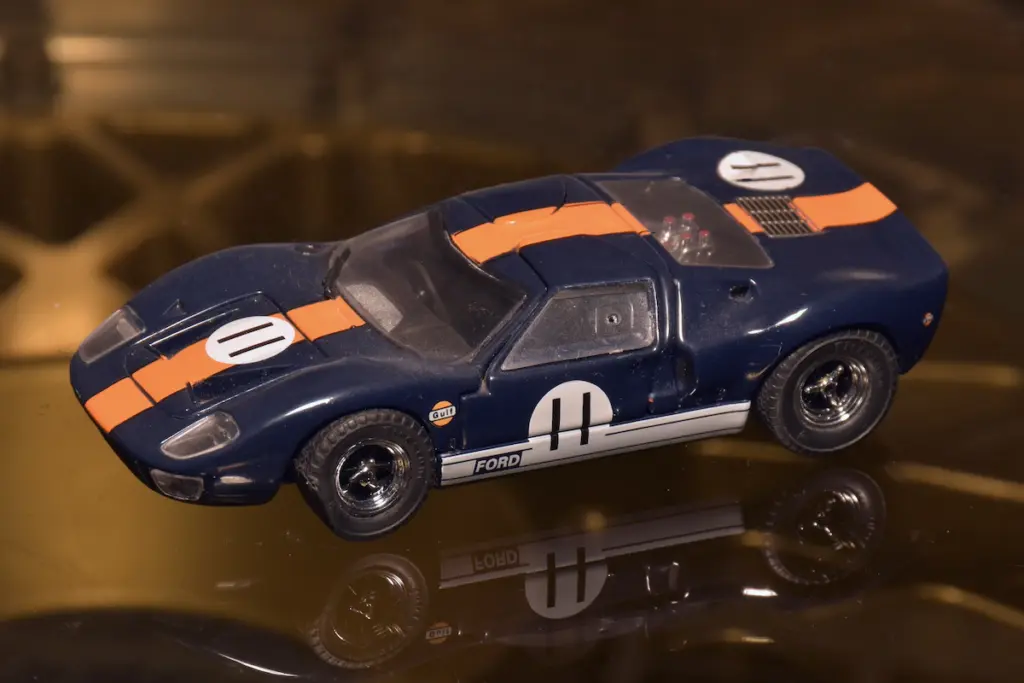
- JOUEF EVOLUTION #unknown (diecast)
1967 Le Mans 24h, Mirage M1 – Ford. In 1967, Ford raced the MkIV, an aerodynamically improved version of the successful MkII. John Wyer was one of the customer teams and rebuilt some Ford GT40 chassis’ and changed these into the Mirage M1. The Mirage was lighter, stiffer and had better aerodynamics than the original GT40. But it still used the original engine, enlarged to 5.0 liter where the works Fords relied on the much more powerful 7.0 liter Nascar engine.
#15 Jacky Ickx (B) / Brian Muir (AUS) – DNF
Mirage M1 – 5.0 liter Ford 289 Weslake V8 90º , approx. 430 hp. Firestone tires. Weight 860 kg. Steel semi-monocoque, chassisnr. #10003 (Ford #1074)

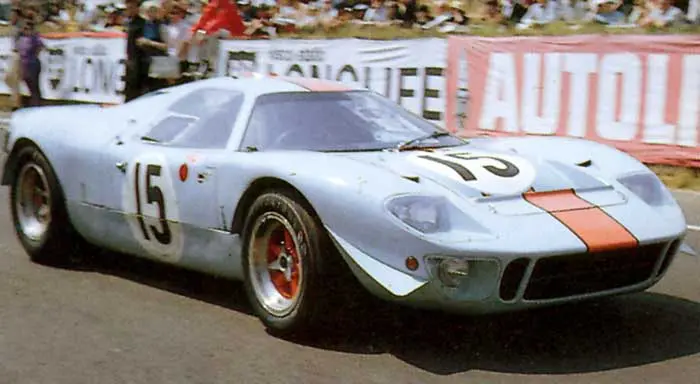
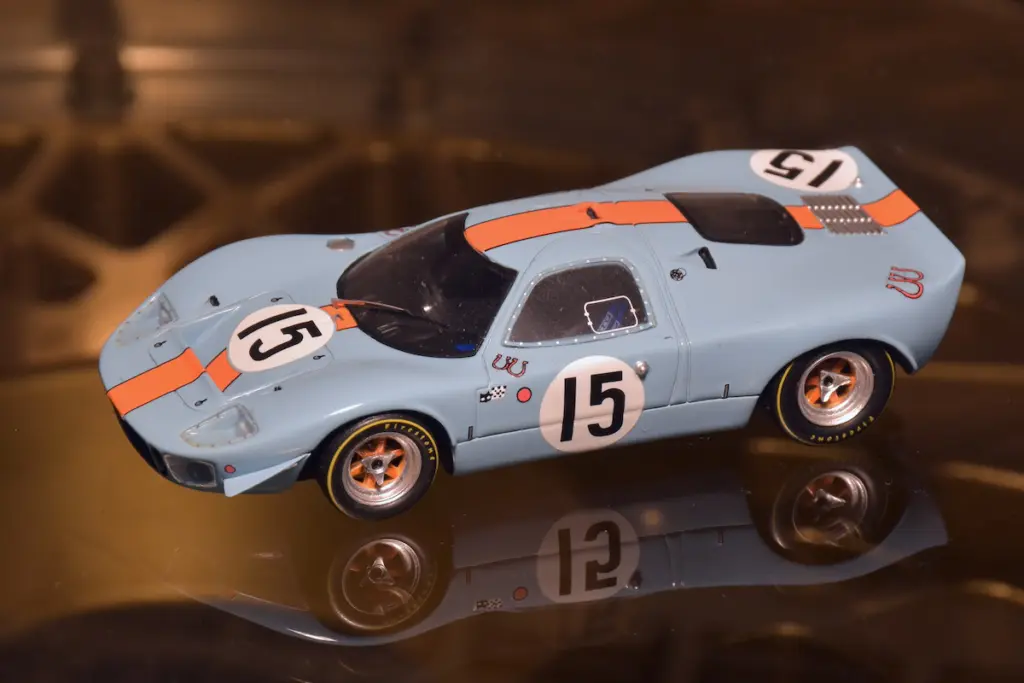
- BIZARRE BZ296 (resin)
Le Mans winner
1968 Le Mans 24h, Ford GT40. Ford already won twice in previous years with the MkII and MkIV. In 1968 these 7 liter prototypes were no longer allowed, the maximum engine capacity for prototypes was only 3 liter and the new generation prototypes were favorite to win Le Mans. To get enough cars on track, also 5 liter sports cars were allowed to participate. JWA Racing entered three older GT40’s and won the 24-hour race. In fact the winning car wasn’t an old GT40 at all, it was one of the 1967 Mirage M1 chassis’ that was built back to GT40 specs, remaining the lower weight and greater stiffness …
#9 Pedro Rodriguez (MEX) / Lucien Bianchi (B) – 1st
Ford GT 40 – 5.0 liter Ford 289 Weslake V8 90º , approx. 430 hp. Firestone tires. Weight 860 kg. Steel semi-monocoque, chassisnr. #1075
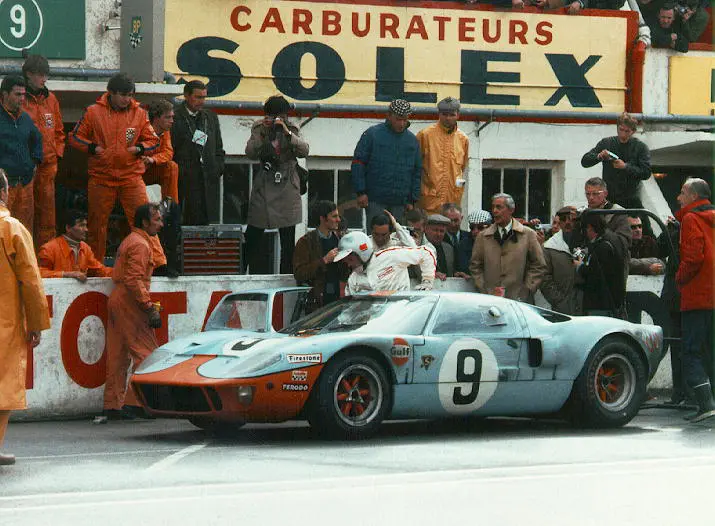
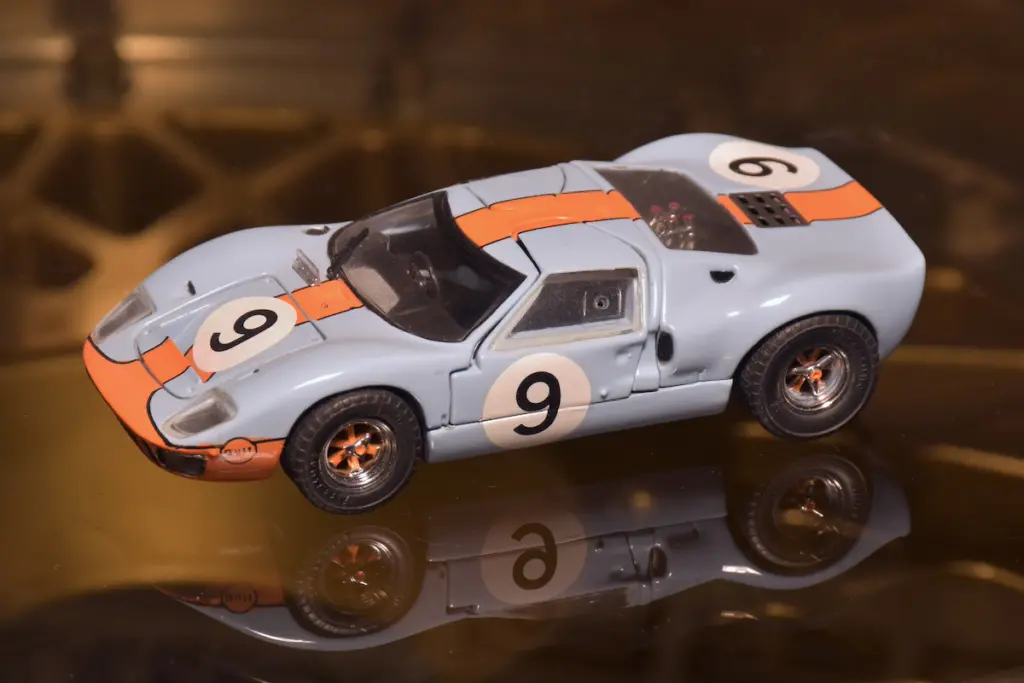
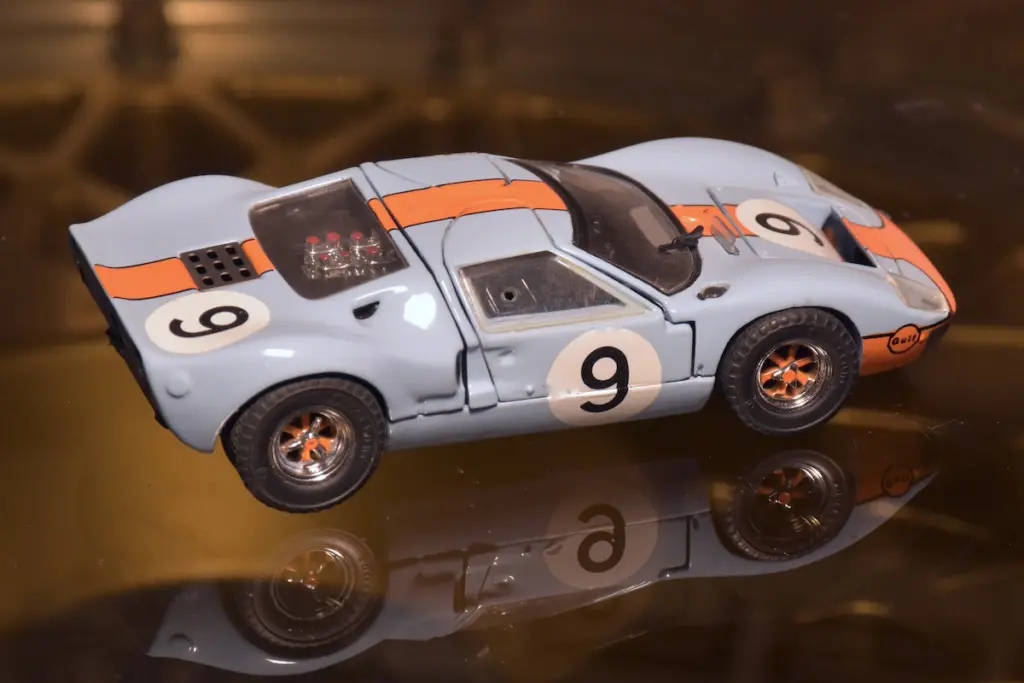
- JOUEF EVOLUTION 1004 (diecast)
1968 Le Mans 24h, Ford GT40. This #10 car was a “back to GT40 specs” Mirage also. It was driven by Paul Hawkins and David Hobbs but retired with a broken engine.
#10 Paul Hawkins (AUS) / David Hobbs (GB) – DNF
Ford GT 40 – 5.0 liter Ford 289 Weslake V8 90º , approx. 430 hp. Firestone tires. Weight 860 kg. Steel semi-monocoque, chassisnr. #1074

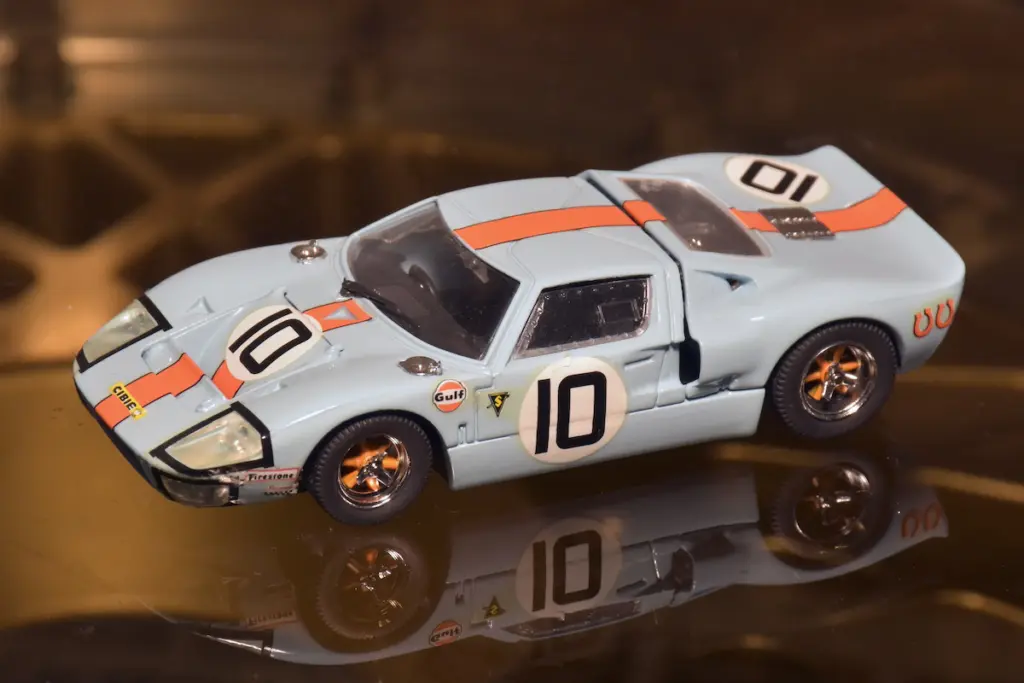
- BANG 7072 (diecast)
1968 Le Mans 24h, Ford GT40. The third Ford GT40 from JWA was a real GT40 but it didn’t get far. Brian Muir got stuck in the sand trap at the exit of Mulsanne corner. It took him almost two hours of digging – nowadays we would have a safety car and a tractor – and he burnt the clutch in the process of getting out.
#11 Brian Muir (AUS) / Jackie Oliver (GB) – DNF
Ford GT 40 – 5.0 liter Ford 289 Weslake V8 90º , approx. 430 hp. Firestone tires. Weight 890 kg. Steel semi-monocoque, chassisnr. #1076
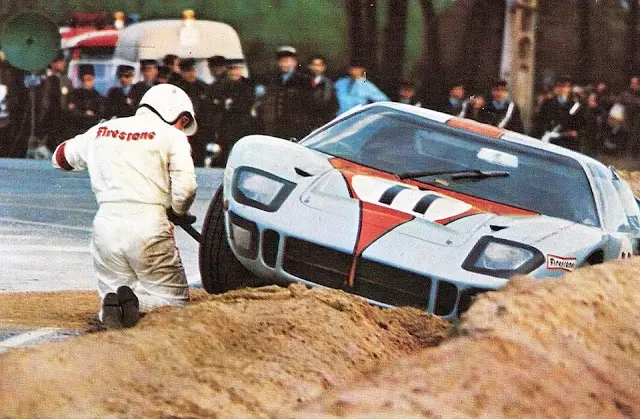
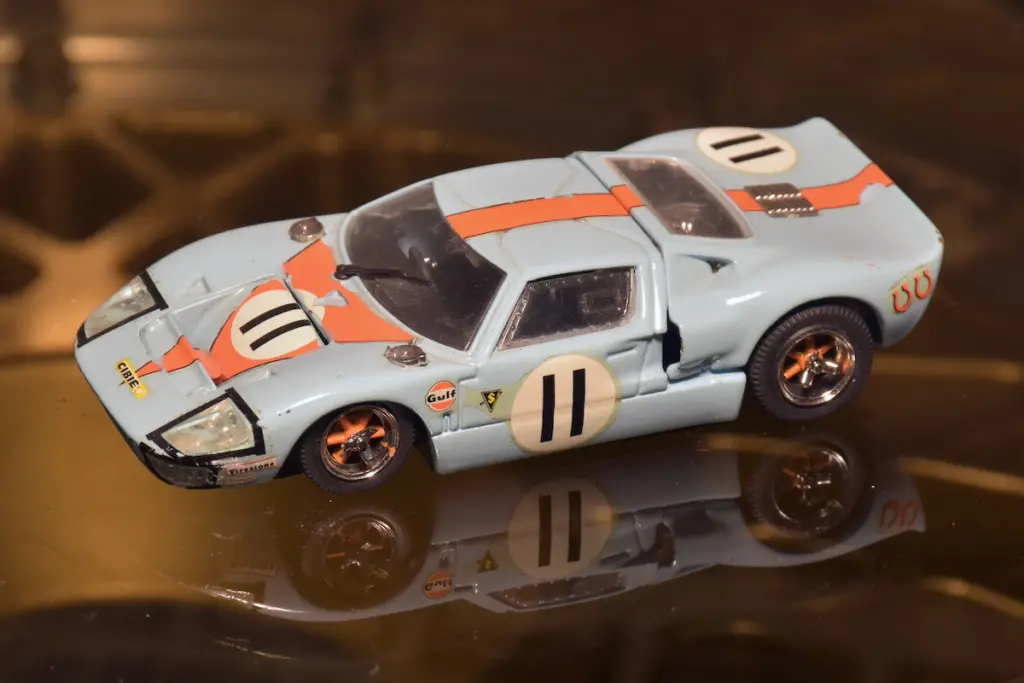
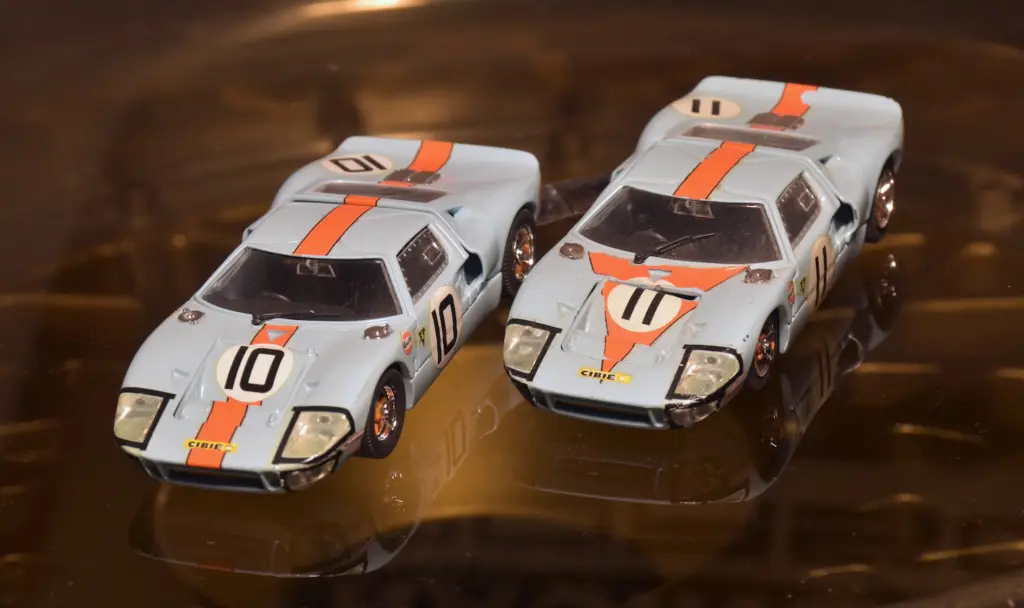
- BANG 7073 (diecast)
1969 Le Mans 24h, in general. Porsche didn’t only run their 3-liter prototypes but found a loop hole in the regulations and introduced the fast – but aerodynamically still unstable – Porsche 917. Last year’s winner wouldn’t stand a chance against these modern racing cars. Jacky Ickx took the start of the race for the #6 JWA entry. Drivers would run across the track, jump in their cars and race off without their seat belts. Ickx protested against this and walked across the track quietly, fastened his belts and drove off in last position. Sadly John Woolfe (first picture) crashed his Porsche 917 in the first lap and lost his life because he wasn’t strapped in, proving that Ickx was right. It would be the last time that the drivers ran to their cars.
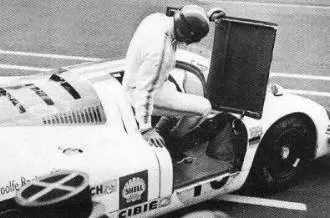
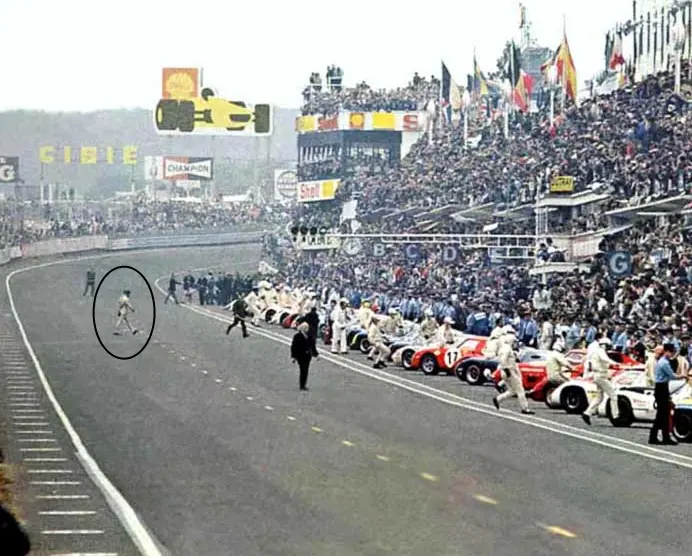
Another surprise victory
1969 Le Mans 24h, Ford GT40. Jacky Ickx and co-driver Jackie Oliver made up places throughout the race and by the end of Sunday morning the light blue Ford was heading the field because the last of the Porsche 917s retired. The last hours would be a battle between the Ford and the fastest of the Porsche 908s. The slick Porsche was faster on the straight, Ickx knew that if he would turn on the Mulsanne straight first, the Porsche would pass him and he wouldn’t be able to get it back. In the last lap, Ickx pretended to have run out of fuel. Hans Hermann in the Porsche went past and Ickx went for his slipstream. The Porsche had some brake problems and so Ickx outbraked the Porsche at the end of Mulsanne and took victory with less than a second!
#6 Jacky Ickx (B) / Jackie Oliver (GB) – 1st
Ford GT 40 – 5.0 liter Ford 289 Weslake V8 90º , approx. 430 hp. Firestone tires. Weight 860 kg. Steel semi-monocoque, chassisnr. #1075

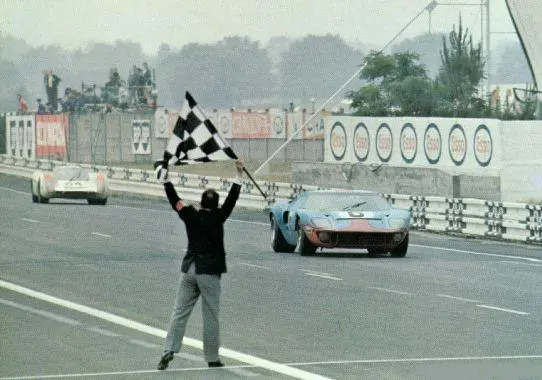
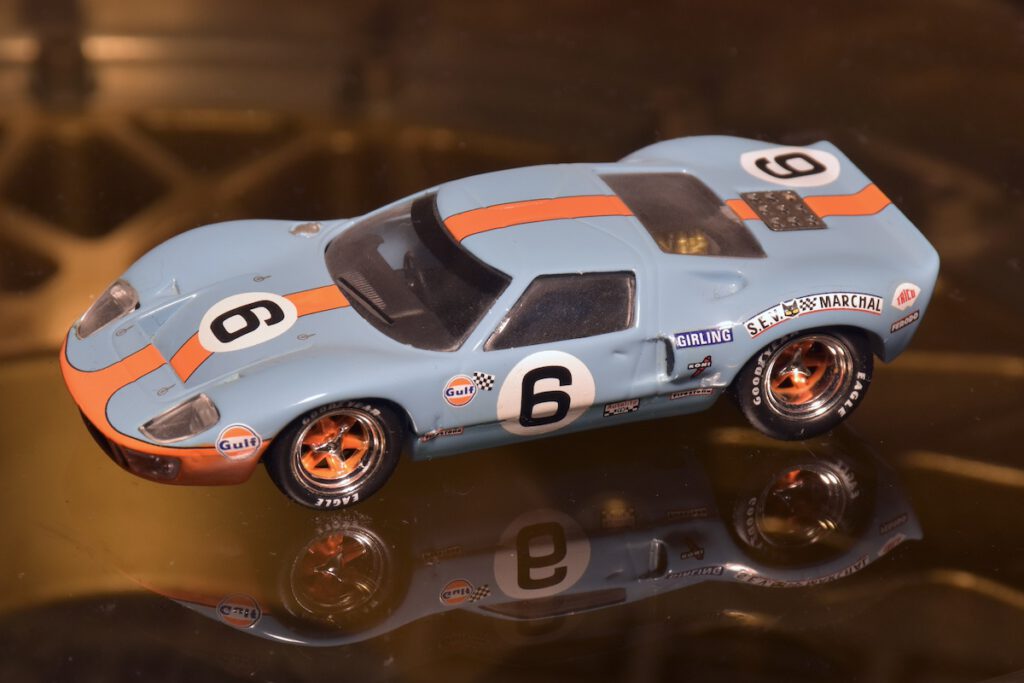
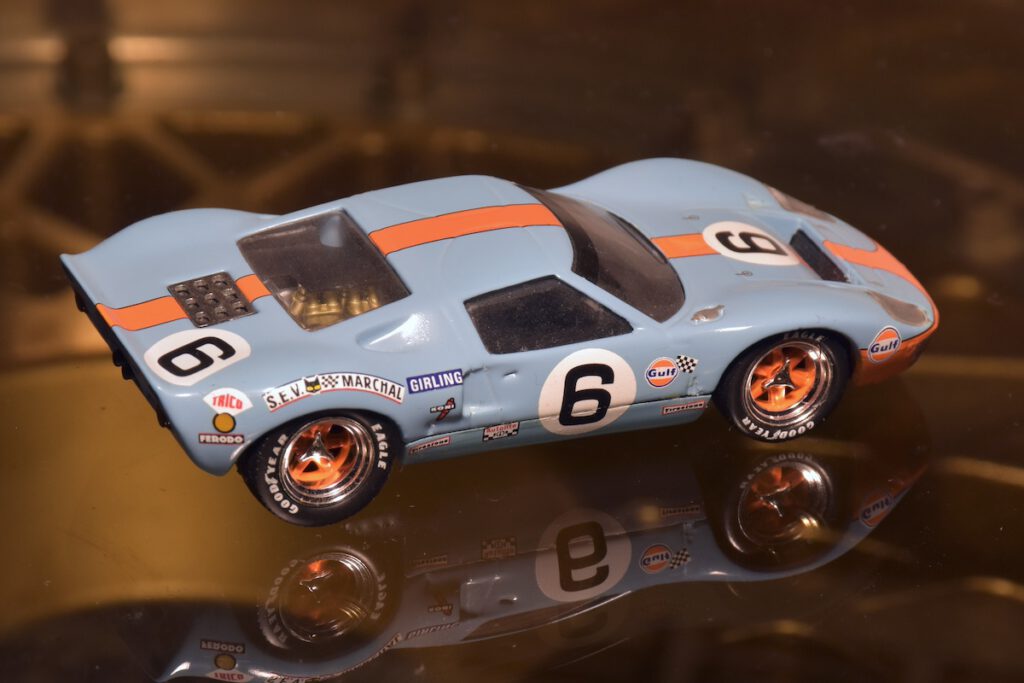
- ALTAYA 100 ans de sport automobile #29 (diecast)
1969 Le Mans 24h, Ford GT40. To complete the JWA success, the #7 Ford with finished in 3rd position.
#7 David Hobbs (GB) / Mike Hailwood (GB) – 3rd
Ford GT 40 – 5.0 liter Ford 289 Weslake V8 90º , approx. 430 hp. Firestone tires. Weight 860 kg. Steel semi-monocoque, chassisnr. #1076
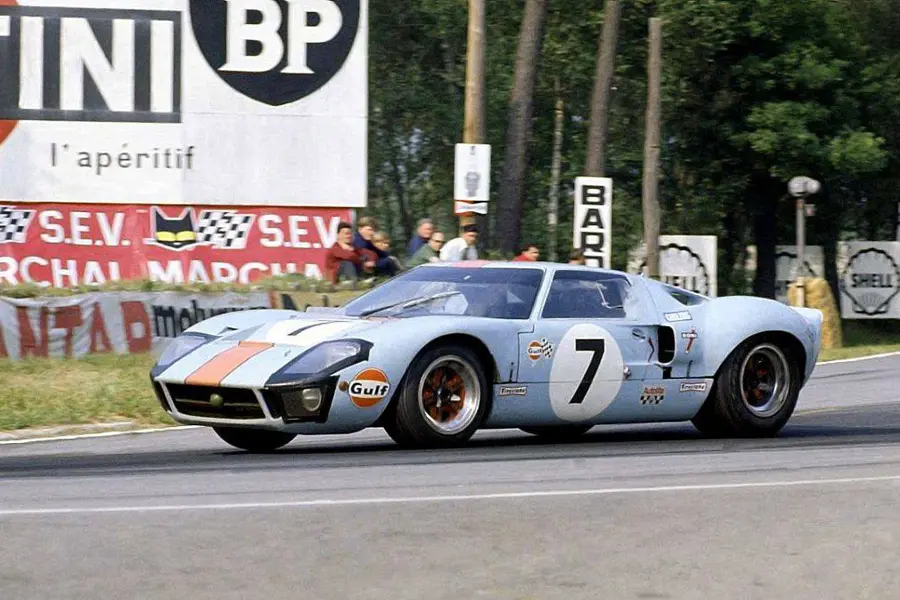
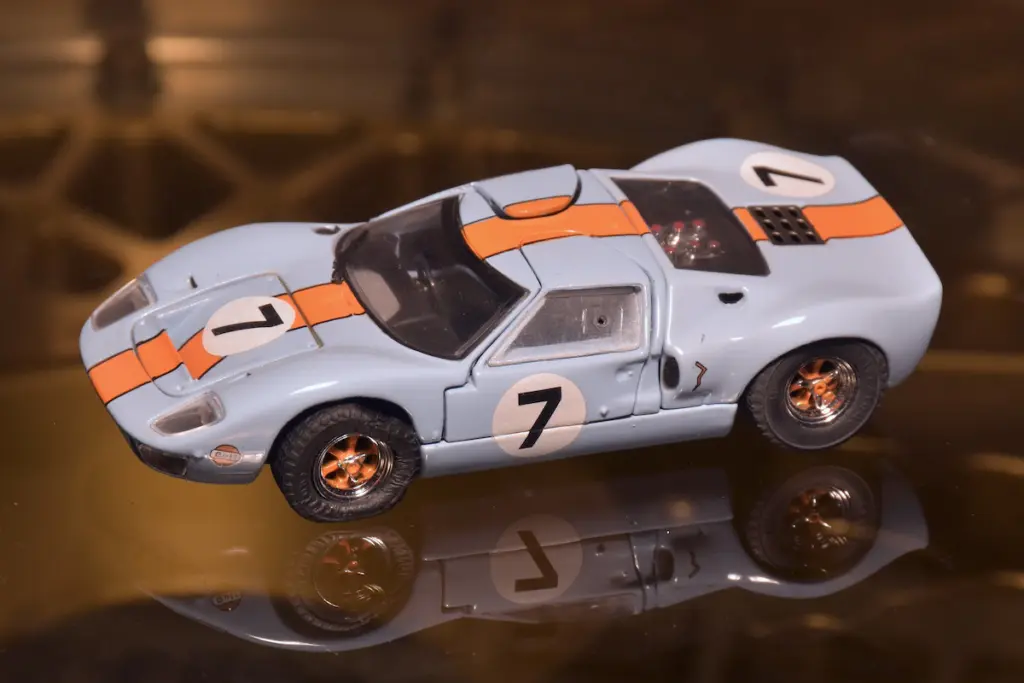

- JOUEF EVOLUTION 300700 (diecast)
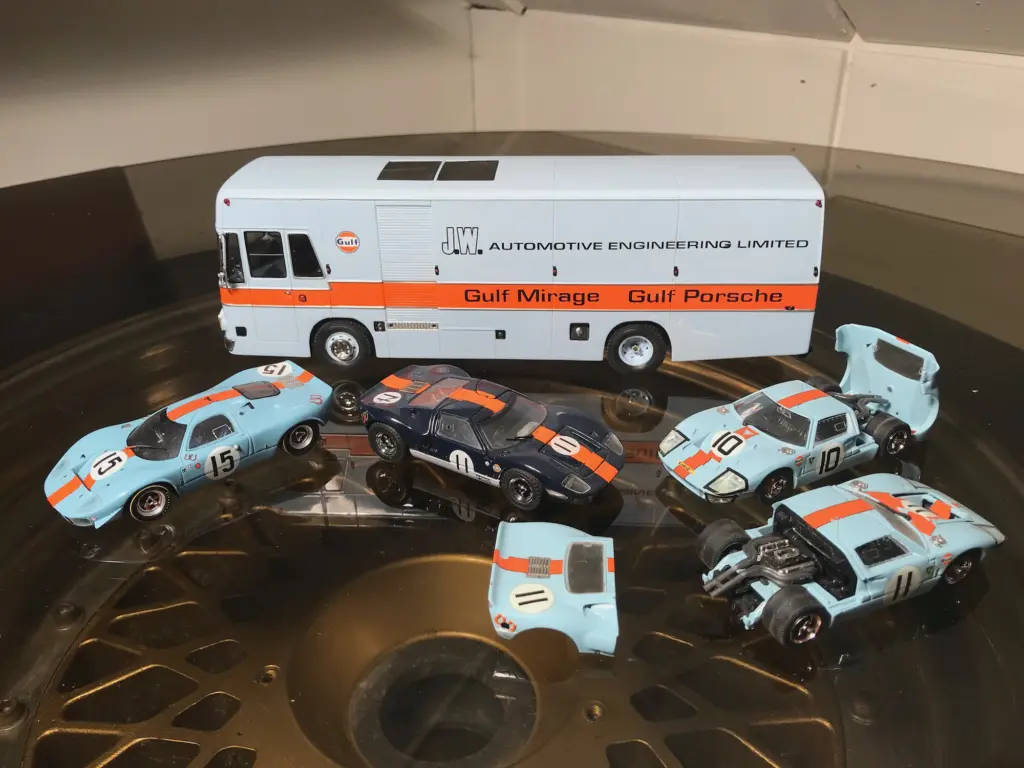
Gulf Mirage
1974 Le Mans 24h, Mirage GR7 – Ford. After 1972, the big sportscars have disappeared from Le Mans. The 3-liter prototypes took over and Matra-Simca was the leading team with three wins in a row. The JWA Gulf Mirage which made its debut a year before was quit competitive but lacked some engine power compared to the screaming 12 cylinders from Matra. One Gulf Mirage finished 4th overall, the other retired.
#11 Derek Bell (GB) / Mike Hailwood (GB) – 4th
#12 Vern Schuppan (AUS) / Reine Wissell (S) – DNF / engine
JWA Mirage GR7 – Ford Cosworth DFV – V8 90º, approx. 445 hp. Goodyear tires. Weight 680 kg. Aluminium monocoque, chassisnrs. #704 & #701
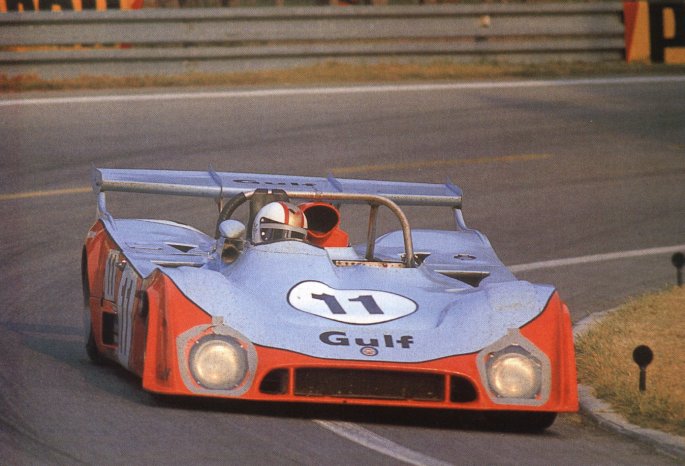
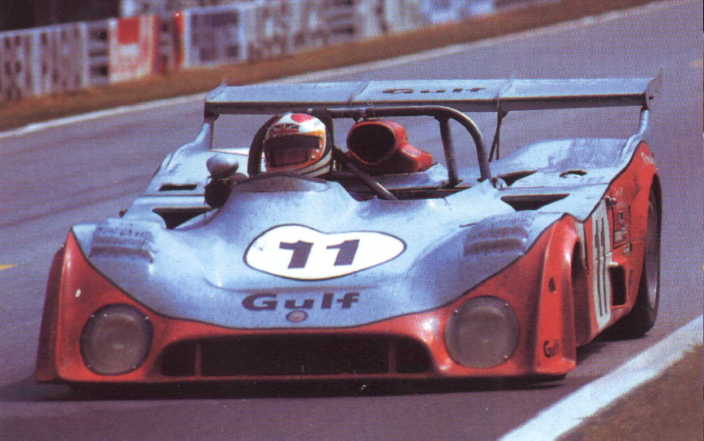
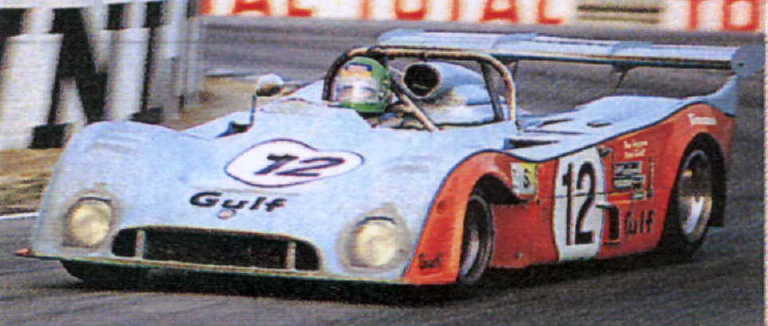

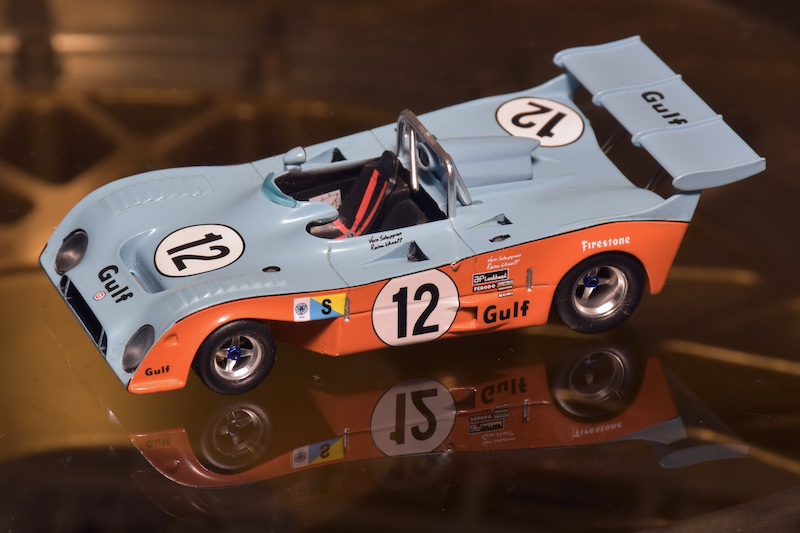
- SPARK STME 05 & STME 06 (resin)
1975 Le Mans 24h, Mirage GR8 – Ford. 1975 Was a year in between of two era’s: Matra quit after 3 wins in a row and Porsche and Renault would come in 1976 with their new turbocharged cars. Team Gulf Mirage took their chances, also thanks to the two topdrivers Ickx and Bell and the fuel consumption rules that benefited the Cosworth V8 which was turned down in power.
#10 Vern Schuppan (AUS) / Jean-Pierre Jaussaud (F) – 3rd
#11 Jacky Ickx (B) / Derek Bell (GB) – 1st
JWA Mirage GR8 – Ford Cosworth DFV – V8 90º, approx. 385 hp (restricted). Goodyear tires. Weight 650 kg. Aluminium monocoque, chassisnrs. #801 & #802
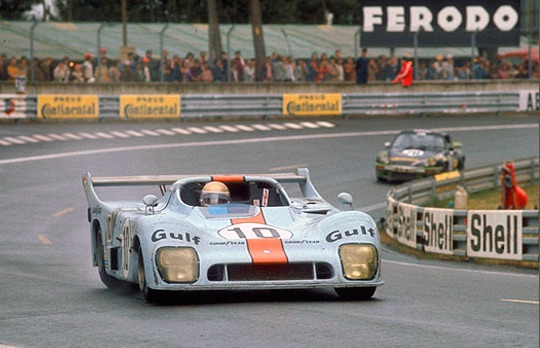
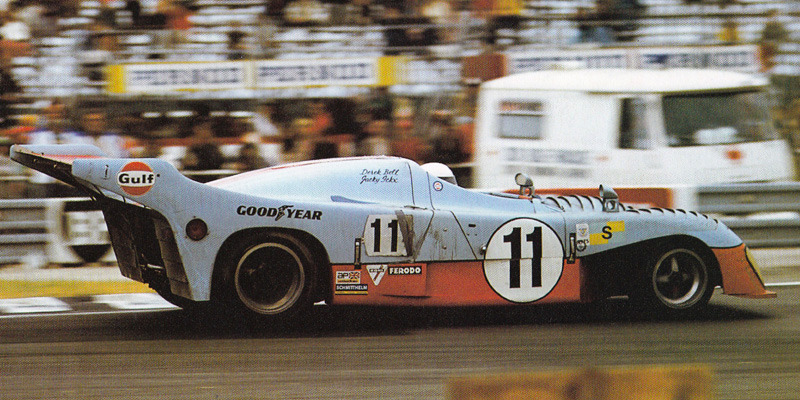

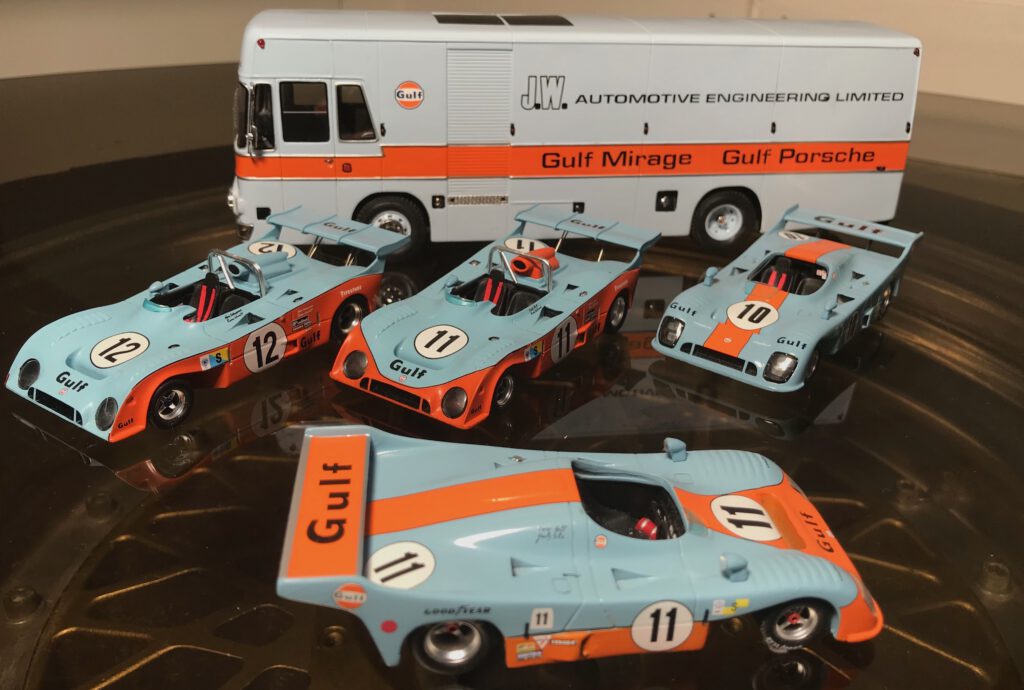
- SPARK STME 07 & STME 08 (resin)
30 years later
2006 Ford GT. The 2006 Ford GT started as a concept car but was taken in production soon after. It was inspired by the famous Le Mans racers. The cars in the blue and orange color scheme of Gulf were named the Heritage Edition. This second generation Ford GT has a 5.0 liter super charged V8 that delivers 550 hp.
Ford GT Heritage Edition – 5.0 liter Ford Ford V8 90º supercharger, approx. 550 hp. Aluminum space frame, chassisnr. #unknown
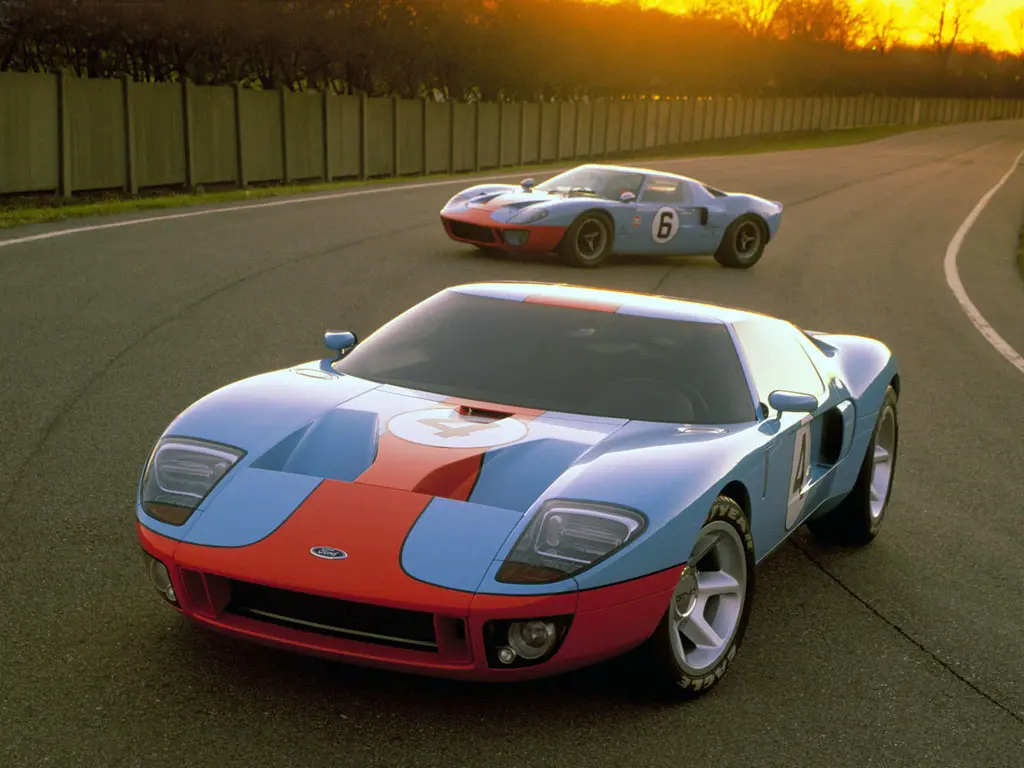
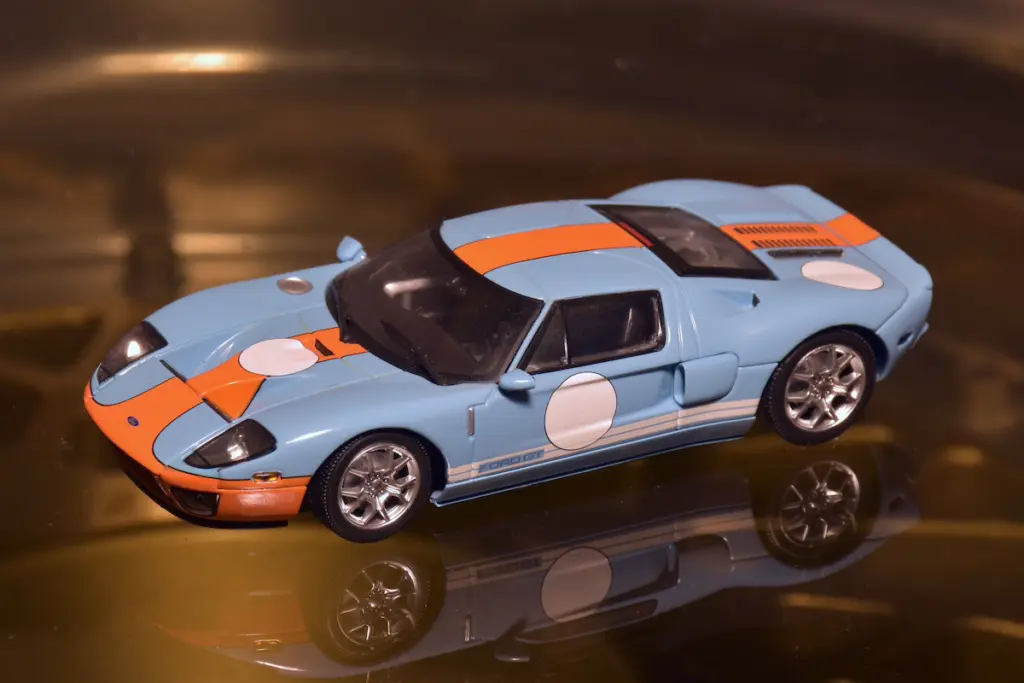
- MINICHAMPS MC400 084202 (diecast)
Thanks for visiting 🙂
